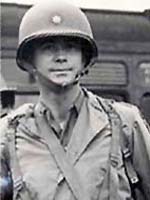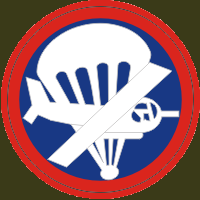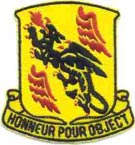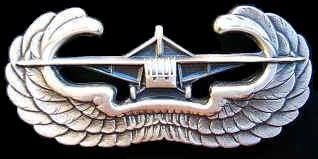|
|
. 81ST AAAB . AIRBORNE ANTI AIRCRAFT BATTALION |
|
The soldiers of this division came from the 401st and 327th GIR
units.
The third battalion minus "K" Coy of the 401st became the “C”
and ‘F” batteries.
"B" Co of the 327th GIR gave ”B” battery of the 81st.
First and second platoon of the antitank companies of the 327th
became “A” battery.
Heavy companies “H” and “E” of the 327th became “D” and “E” batteries.
HQ, 3rd Battalion of the 401st and 1st Battalion of the 327th GIR became the HQ of the 81st.
Medical staff came from the medical companies of the 327th GIR and 401st.
Each battery held 71 soldiers, the medical detachment 23 and the HQ 26.
“A”, “B” and “C” batteries are antitank batteries with each eight 37mm canons that later will be changed for a 57mm British heavy gun, due to the fact that it could be airlifted by the gliders.
“D”, “E” and “F” are anti-aircraft batteries with 12 anti-aircraft
guns, .50 calibre air-cooled, mounted on a M3 carriage. After the battle in Normandy,
the guns were fixed and could also serve to support infantry, who only had .30
calibre air-cooled machineguns.
On the 29th September 1942, the battalion is sent to Fort
Bragg in North Carolina.
Here is receives trains with new weapons, loading of gliders and take-off and landings.
The battalion participates at all 101st manoeuvres.
After this, it is sent to New York and goes on board of the HMS Samaria
on September 5th, 1943. The battalion disembarks at Liverpool in Great
Britain to find itself at Basildon Park near Reading, Berkshire.
Physical training intensifies (with long and short marches), placing the
cannons into battery, the use of the gliders and tactical exercises.
On March 25th, 1944 the commanding officer Lieutenant-Colonel
Scoggin is replaced by Lieutenant-Colonel X.B. Cox Jr.
 <- Lieutenant Colonel X.B. Cox
Jr
<- Lieutenant Colonel X.B. Cox
Jr
![]() D-DAY – June 44
–
D-DAY – June 44
–
On June 6th, 1944 "A" and
"B" batteries arrive in
They install their first anti-aircraft defence on the beaches until June 11th.
After this, they are relieved by the VII Corps. They join up with
the battalion to form the defences of the division, important bridges in the
area around Carentan.
Two enemy planes will be shot down on the 6th and 7th June.
 Hollande – September 44 – operation
Market-Garden
Hollande – September 44 – operation
Market-Garden
The
following operation in which the regiment participated was operation “Market
Garden”, the invasion of
It was a daring plan, prepared by the British Field Marshal Montgomery and
would be the first daytime airborne assault since the attack on
The 81st
participated 73 days of which 48 on the frontline.
After the operation they were withdrawn to
![]()
In the morning of December 16th,
1944 the Germans launched a major offensive through the Belgian Ardennes, where
VII Corps assured the American
defences.
Their main objective was to retake the
Until that moment, the 101st and the 82nd were resting in
The 101st
was quickly directed to the town of
The 101st
arrived in the night of December 18th with trucks.
From the 19th until the 22nd,
the Germans had completely encircled
On the 23rd they send a
negotiator asking for the surrender of the town.
The
Even encircled and outnumbered, the
Americans resisted all attacks launched by the Germans.
3rd
Army’s 4th Infantry Division
broke through the encirclement.
On February 23rd the 81st returned to Mourmelon in
![]() The End – 1945
The End – 1945
April 2nd, 1945 the 101st was sent to the Ruhr sector in
The division found itself near Düsseldorf.
On May 4th and 5th,
the 101st received its
last mission, to go to
In September, the battalion was back in
![]() Awards & decorations
Awards & decorations
2 Presidential Distinguished
Unit Citations for operations in Normandie and
War Cross with
palms for the
2 War Cross and Lanyard for the Bastogne operations
Lanyard Oranje from the Netherlands for the operation Market Garden

